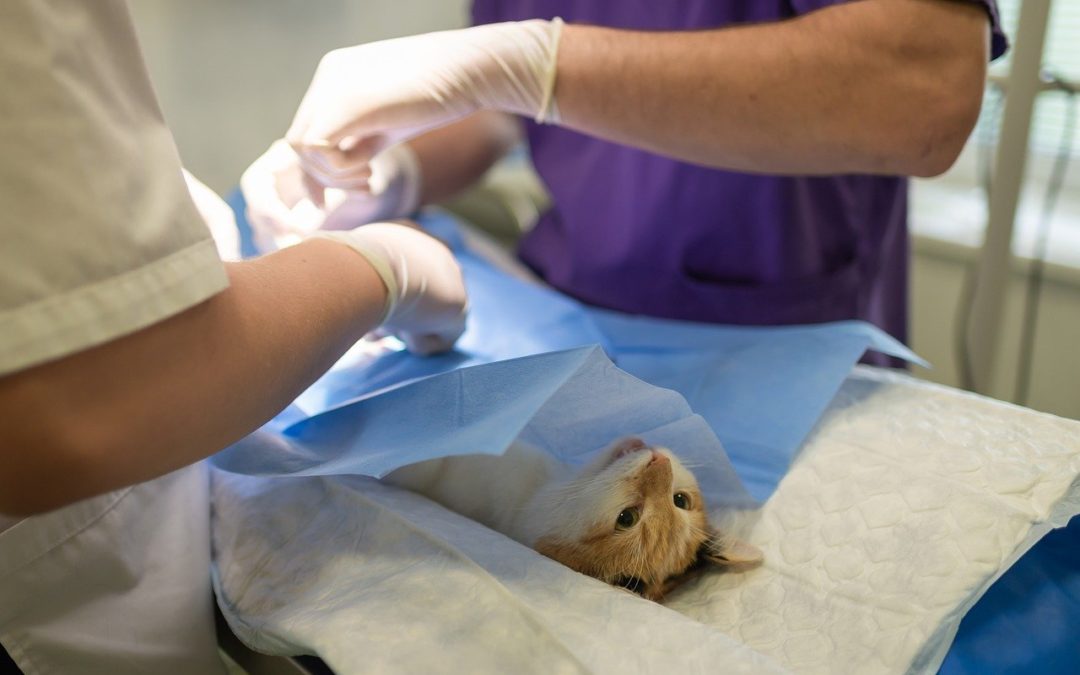Emergency surgery is scary, but we’re here to help
The idea of the family cat or dog going under the knife, whether it’s for a dental, routine spay, or anything else, can be stress-inducing. This is especially true if your pet is having an emergency surgery whether from illness or trauma. With surgery being scary and costly, how do you know if your furry companion really needs it? Go to your vet, of course! But as a guide, we built a list of the most common emergency surgeries and signs related to them.
Urinary obstruction – Being unable to urinate is painful and very quickly can become fatal. Most often animals will seem like they are trying to pee every few minutes with nothing or only drops coming out. Sometimes straining to urinate may be just as simple as an infection, but if your animal is blocked, waste products and toxins start building up in the bloodstream. This is when things get serious, fortunately, pets will show lots of signs if this is happening: animals will stop eating, some start vomiting, and they become very lethargic. You should diagnose this quickly and get your companion in for an emergency un-blocking procedure.
Trauma – For many people, having their beloved pet break a bone, get hit by a car, or be the victim of a dog attack will be the toughest thing they can watch their pet go through. Most of the time, you will know right away when something like this happens and will be able to bring your animal to the vet to repair the wounds you can see. Your vet will check for additional internal injuries that might be just as serious as the external ones.
Foreign body – Our pets are quirky, and lots of them will munch, shred, and gnaw on things that shouldn’t be eaten. If your pet is vomiting multiple times a day or multiple days in a row, if they refuse to eat despite normally being a chowhound, or are acting painful (lethargic, hunching, panting), you might be looking at an intestinal blockage. These can be very serious and need a vet to diagnose and treat, usually with surgery.
Pyometra – A pyometra is a uterine infection and can be one of the trickiest emergencies for owners to spot. If the pyometra is draining, you’ll notice a smelly, pus-like discharge from the vulva. Many dogs with a pyo don’t have this drainage, so it’s important to monitor appetite and energy, which will drop during this infection. With bloodwork and x-rays, your vet should be able to determine if an emergency spay is needed to get rid of the infection. Of course, we recommend getting your dog spayed before she gets a pyometra to eliminate that risk.
Because diseases and injuries are not limited to just these signs, it’s important to spot irregularities in your pet’s behavior as soon as possible. If you’ve found that surgery is needed for your pet, give Animal Works Veterinary Surgery a call for further guidance. However, here are some general steps you take to prepare before your pet’s upcoming surgery.
- Don’t feed your pet after 10 PM the night prior to surgery unless directly instructed by your veterinarian or doctor.
- Advise your veterinarian of any pre-existing conditions/allergies your pet may have. Depending on their current condition or past health history, this information can change the dose and type of anesthesia needed for surgery.
- Prepare all necessary medication your pet is currently taking. Consult with your doctor if it’s advisable to withhold medication prior to your pet’s surgical procedure. Medication can be administered on location if advised by your veterinarian.
- Don’t shave the surgical site of your pet. This will be done on location prior to your pet’s surgery.
Your pet’s safety and health are of the utmost importance, whether in the event of surgery or otherwise. Keep an eye out for signs in your pet’s behavior or appearance that seem out of the ordinary. If you’re unsure your pet has health issues or requires emergency medical care, please give our office a call to assess your furry friend’s condition.

